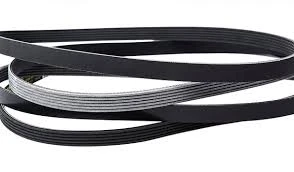- Arabic
- French
- Russian
- Spanish
- Portuguese
- Turkish
- Armenian
- English
- Albanian
- Amharic
- Azerbaijani
- Basque
- Belarusian
- Bengali
- Bosnian
- Bulgarian
- Catalan
- Cebuano
- Corsican
- Croatian
- Czech
- Danish
- Dutch
- Afrikaans
- Esperanto
- Estonian
- Finnish
- Frisian
- Galician
- Georgian
- German
- Greek
- Gujarati
- Haitian Creole
- hausa
- hawaiian
- Hebrew
- Hindi
- Miao
- Hungarian
- Icelandic
- igbo
- Indonesian
- irish
- Italian
- Japanese
- Javanese
- Kannada
- kazakh
- Khmer
- Rwandese
- Korean
- Kurdish
- Kyrgyz
- Lao
- Latin
- Latvian
- Lithuanian
- Luxembourgish
- Macedonian
- Malgashi
- Malay
- Malayalam
- Maltese
- Maori
- Marathi
- Mongolian
- Myanmar
- Nepali
- Norwegian
- Norwegian
- Occitan
- Pashto
- Persian
- Polish
- Punjabi
- Romanian
- Samoan
- Scottish Gaelic
- Serbian
- Sesotho
- Shona
- Sindhi
- Sinhala
- Slovak
- Slovenian
- Somali
- Sundanese
- Swahili
- Swedish
- Tagalog
- Tajik
- Tamil
- Tatar
- Telugu
- Thai
- Turkmen
- Ukrainian
- Urdu
- Uighur
- Uzbek
- Vietnamese
- Welsh
- Bantu
- Yiddish
- Yoruba
- Zulu
Dec . 12, 2024 05:59 Back to list
auto v belt
Understanding Auto V-Belt A Comprehensive Guide
The auto V-belt is an essential component in many vehicles, playing a crucial role in the efficient functioning of various systems. Understanding what a V-belt is, how it works, and its significance in automotive engineering can help car owners and enthusiasts appreciate the sophistication of modern vehicles.
What is an Auto V-Belt?
A V-belt, or a V-shaped belt, is a type of mechanical belt used to transfer power between two or more rotating shafts. Its design features a trapezoidal cross-section resembling the letter V, which allows it to fit snugly into the grooves of the pulleys. This configuration enhances friction and grip, enabling efficient energy transfer from the engine to various components.
Auto V-belts are predominantly used in internal combustion engines to drive accessories such as the alternator, water pump, power steering pump, and air conditioning compressor. The versatility and efficiency of V-belts make them a staple in the automotive industry.
How Does an Auto V-Belt Work?
The operation of an auto V-belt revolves around the concept of friction. When the engine runs, it turns the crankshaft, which is connected to the drive pulley. As the crankshaft rotates, it drives the V-belt, which in turn moves the other pulleys connected to different engine components.
The V-shape of the belt allows it to wedge tightly into the pulley grooves, minimizing slippage. This feature is critical because if a belt slips, it can lead to insufficient power transfer, causing accessories to underperform or fail entirely. Moreover, the design accommodates thermal expansion and contraction, ensuring the belt maintains optimal contact with the pulleys throughout varying temperature conditions.
Types of V-Belts
There are several types of V-belts, each designed to accommodate specific applications
1. Classical V-Belts These are the most common type and are used in various standard applications due to their reliability and ease of installation.
auto v belt

2. Narrow V-Belts These belts have a narrower cross-section, enabling them to fit into tighter spaces. They provide improved power transmission due to a higher contact area and are often used in performance applications.
3. Variable Speed V-Belts Designed to accommodate varying speed applications, these belts are often used in machines where speed control is paramount.
4. Cogged V-Belts These belts feature cutouts or cogs along their length, reducing bending resistance and increasing flexibility. They are ideal for high-performance applications, such as racing.
The Importance of Proper Maintenance
Maintaining an auto V-belt is vital for ensuring the longevity and efficiency of a vehicle's systems. Here are some maintenance tips for car owners
1. Regular Inspections Periodically check the belt for signs of wear, such as fraying, cracking, or glazing. These indicators suggest that the belt may need replacement.
2. Check Tension Proper belt tension is crucial for optimal performance. Too loose or too tight can lead to premature wear or failure. Most modern vehicles come equipped with tensioners that automatically adjust belt tension, but it's still essential to monitor.
3. Cleanliness Keep the belt free from oil, dirt, and debris, which can significantly affect grip and performance. Oil contamination, in particular, can lead to slippage and overheating.
4. Replacement If a belt shows significant wear or damage, it should be replaced promptly. Most auto manufacturers recommend replacing V-belts every 50,000 to 100,000 miles, depending on the vehicle and usage conditions.
Conclusion
In conclusion, the auto V-belt is a crucial component that contributes significantly to a vehicle's performance and reliability. Understanding its function, types, and maintenance can help vehicle owners ensure that their cars operate smoothly. As technology advances, new materials and designs may lead to improved V-belt systems, but the fundamental role of these belts in the automotive world will remain indispensable. Whether you're a car enthusiast or a casual driver, appreciating the intricacies of systems like the V-belt enriches our understanding of automotive engineering and the technology that drives our vehicles.
-
Upgrade Power Steering Pump Belt for Smooth, Quiet Operation
NewsAug.27,2025
-
Precision Timing Belt & Chain: Engine Performance & Durability
NewsAug.26,2025
-
Precision Lathe Drive Belts: Durable & Reliable Performance
NewsAug.25,2025
-
84.5 Serpentine Belt: Durable & Precision Fit for Your Engine
NewsAug.24,2025
-
Premium Ribbed Drive Belts for Quiet Power Transmission
NewsAug.23,2025
-
High-Performance Vehicle Timing Belt for Engine Precision
NewsAug.22,2025

